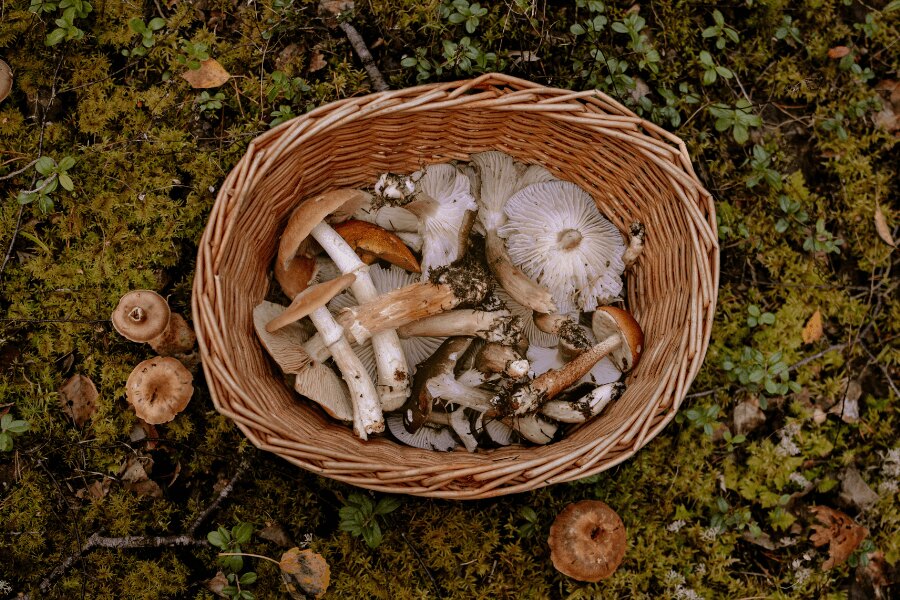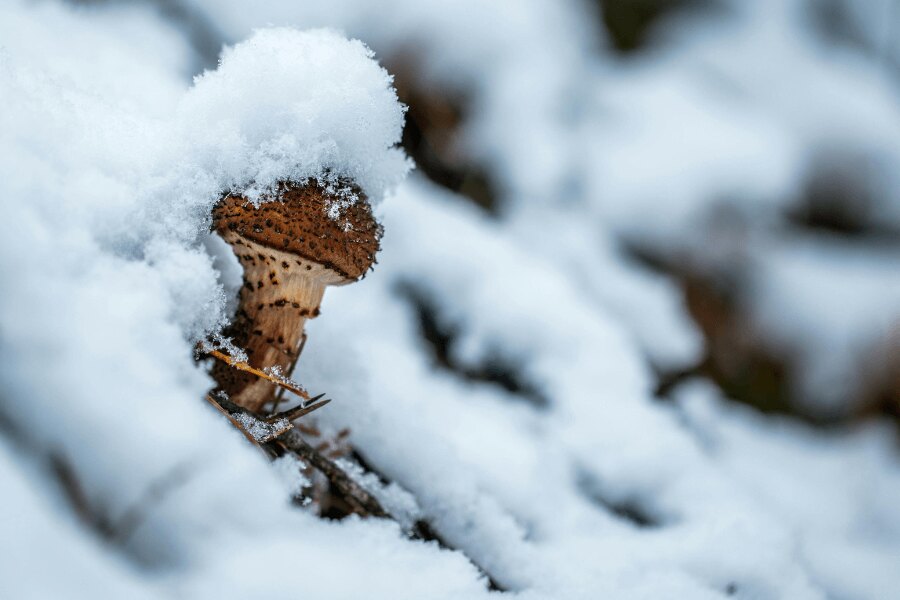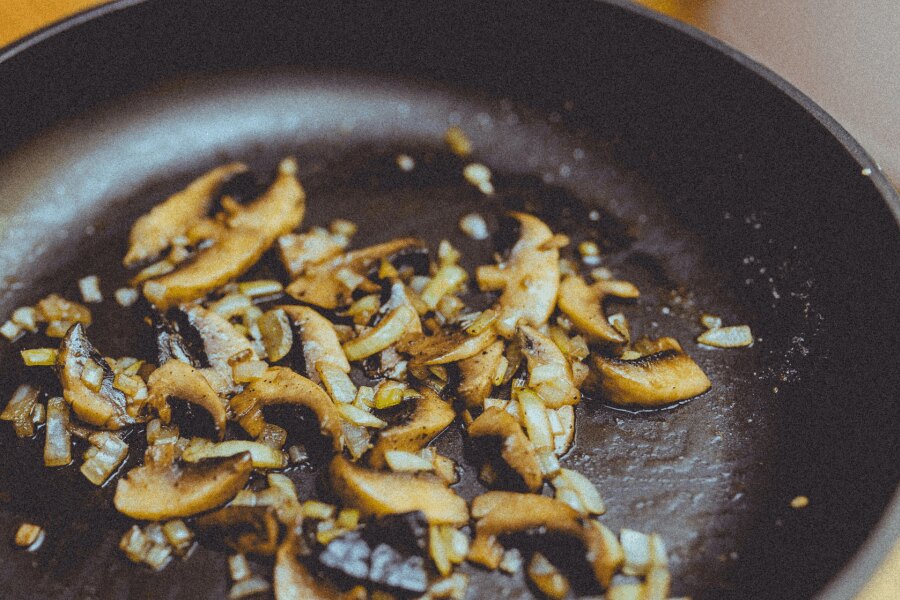What to do if you eat a poisonous mushroom?
Czechs are famous for picking mushrooms. Who hasn't taken a photo and shared a full basket of mushrooms this fall, were like as if they didn't exist. Nevertheless, even to an experienced mushroom picker can sometimes happen that a mushroom dish "simply doesn't suit" them, they mistakenly confuse the species, or they get poisoned. However, the safe picking of mushrooms has its own principles that must be followed. Come with us to remember what mistakes to avoid in the forest, what are the main symptoms of poisoning and what is the first aid if it does happen.
In the Czech forests, you will find a whole range of excellent mushrooms that stand out in your sauces, scrambled mushrooms or soups. However, so that you don't get food poisoning from the forest instead of a culinary experience, we have prepared some important information for you that can literally save your life.
TIP: A good knowledge of mushrooms is important, but so is the right equipment. Read how to choose the right mushroom knife.

Safe mushroom picking has its principles, which are also the best prevention against potential mushroom poisoning.
How to prevent mushroom poisoning?
As with almost all dangerous situations in our world, prevention is the best solution.
Read 6 principles to avoid poisoning.
1) Collect only mushrooms that you know for sure
If you are just starting out with mushroom picking, or if you have always collected only the most notorious mushrooms, then it is better to go to the forest with a real expert who will carefully familiarize you with other types of mushrooms. Another option is, for example, to visit a forest with a mushroom atlas and then explore the differences and avoid confusing edible mushrooms with poisonous ones. Don't rely 100% on mushroom recognition apps, as they aren't always infallible either.
If you go out into the forest on your own, it is a good idea to show the basket to an experienced mycologist immediately after your return, who will sort the mushrooms for you. But under no circumstances should you consume a mushroom that you are not 100% sure is edible.
2) Avoid tasting
Some types of mushrooms are at best inedible without heat treatment, at worst they can be poisonous. Mushrooms are also home to bacteria, which can really mess up your digestion. Therefore, if you are not lost in the forest on the second day without a chance to find another type of food, then we recommend that you leave the gourmet experience until home.
3) Beware of plastic bags
Go out for mushrooms always with a basket, breathable bag or box. Mushrooms get crumpled and steamed in plastic bags. As a result, you will get a difficult-to-identify mixture out of the bag, which will kind of take on a life of its own.
4) Do not pick frozen mushrooms
Mushrooms mainly suffer from the frost, there is a risk of poisoning when eating them. If you come across them during your walk, you should definitely not add them to your cart. After freezing and re-thawing, proteins break down, similar to spoiled meat.

Mushrooms that have been through frost change their properties. Please do not add them to your cart.
5) Process the mushrooms as soon as possible
Room temperature is not very good for mushrooms, so it is best to process them immediately after coming from the forest. Clean them carefully and store what you don't eat the same day in the fridge or process it further – you can dry it in a dryer, freeze it or pickle it. In this way, you will prevent the development of various molds and avoid possible health complications.
6) Keep a sample for future reference
You may have overlooked that you also added an inedible bitter bolete to the scrambled mushrooms. Just in case, it's a good idea to keep a piece of food in a box in case you feel nauseous. A food sample can help your doctor better determine the type of fungus that made you sick.
What are the symptoms of poisoning?
The first symptoms usually appear between 30 minutes and 7 hours after eating a poisonous mushroom. However, there are a number of different symptoms that may indicate that your body is dealing with poisoning. Among the most common symptoms of mushroom poisoning are problems with the digestive tract.
The first and most common symptoms usually include:
- nausea,
- feeling sick,
- diarrhea and abdominal pain.
In addition, psychological symptoms may be present, such as excessive cheerfulness, restlessness, jerky uncoordinated movements, disorientation and even auditory and visual hallucinations.
Symptoms that we usually don't notice at first include twitching in the calf muscle, weakness, drop in blood pressure, mildly higher temperature or increased saliva production.

The Czechs are masters at picking mushrooms and creating culinary specialties. But do not forget the safety principles and familiarize yourself with the first aid procedures. This knowledge will not be lost in life.
What to do if you suspect mushroom poisoning
With most mushrooms from our forests, the risk of poisoning is not so dramatic. If you are not bothered by constant diarrhea and vomiting, first use activated charcoal, a rest regime, plenty of fluids and carefully monitor the development of your health condition. Increased attention must be paid to children and the elderly, both groups have a higher risk of dehydration.
When is home treatment not enough?
Home remedies are definitely not enough if you eat one of our most poisonous mushrooms:
- Amanita phalloides (death cap),
- Amanita phalloides var. alba,
- Amanita verna (fool's mushroom),
- Cortinarius orellanus (fool's webcap).
In this case, seek medical help immediately and, if possible, keep a sample of the fungus for easier identification of the problem.
When poisoned by these mushrooms, the first symptoms appear between 6 and 24 hours after ingestion. In the first stage, you will experience severe abdominal pain, incessant vomiting and severe diarrhea. The patient is weakened as a result of the poisoning, his blood pressure drops and he is highly dehydrated. This phase usually lasts from 3 to 5 days.
In the second phase, diarrhea, vomiting and abdominal pain subside and are replaced by symptoms of severe liver and kidney damage. Patients usually present with right subcostal pain and jaundice. In some cases, the patient may become unconscious. If medical help is not received, then the person usually dies between the 7th and 12th day of poisoning.
First aid for suspected ingestion of poisonous mushrooms
- We'll find out what happened. We quickly interview the victim/witnesses.
- We call the emergency service at number 112 (or 155 in the Czech Republic) and constantly monitor his state of health.
- If the victim is conscious and cooperative, induce vomiting.
- We will provide the remains of mushrooms, food, or vomiting, faeces to be determined later.
- We transfer the patient to the emergency service.
Readers are further interested











































































































































